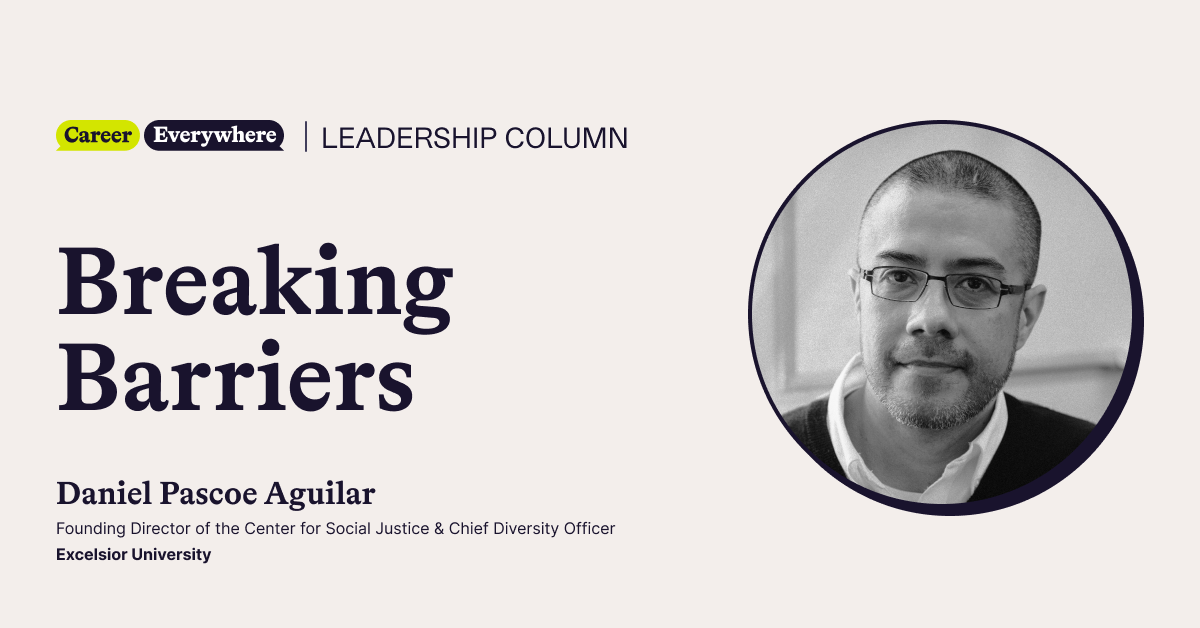
In my first column, I called career professionals to lead systemically, arguing that our leadership of the preparation of a diverse, authentic, purposeful, and ready next generation of leaders for more effective decision-making tables and for a more equitable and just world is one of our most important institutional and societal endeavors.
Commonly, a question I often get when arguing our need for systemic leadership is what strategies or approaches we can pursue for this purpose. Systemic efforts are complex because they take into account the multiplicity of components in the system, their inevitable interdependencies, and the key inputs and outputs of the system. So to get us started, I recommend assessing the key components or members of our ecosystems.
I recommend getting acquainted with the work of Peter Block, whose organizational behavior and consulting expertise can be quite illuminating to our systemic leadership. To give you an interesting example, he wrote the book “The Answer to How is Yes,” and in it, he included the quote, “The opposite of love is not hate; it is efficiency.” I’ve found his perspective and writings to be paradigm-shifting. And based on my second column, you know this is quite something to say.
In 2004, Block introduced a fantastic stakeholder-analysis approach I’ve found very helpful in our necessary assessment of the components or members of our ecosystem in preparation for our systemic leadership work. By design, systemic leadership must be collaborative and engaging of your community stakeholders. So assessing who your key allies, opponents, fans, and adversaries are in your system, and how you may identify opportunities to collaborate with them, can be critical to your efforts.
Block’s model focuses on two assessment criteria or spectra: Whether there is agreement and whether there is trust in your relationship with a stakeholder. Based on these criteria, he identified four stakeholder assessment quadrants:
- Adversaries: Those with whom you share no agreement or trust
- Fans (or who he calls “bedfellows”): Those with whom you share agreement but not trust
- Opponents: Those with whom you share trust but not agreement
- Allies: Those with whom you share trust and agreement
There are three takeaways of Block’s model that have shifted my leadership paradigm.
The first is that our relationships with key stakeholders in our systems are complex. In order to further engage them in our systemic leadership efforts, one needs to meet them where they are, focus on their interests and the fence-sitting opportunities these pose to engage them, and work with them to facilitate their self-motivated transition into a stronger collaboration with you.
My second takeaway could serve as an example of my first takeaway above. One of the most powerful insights of Block’s model is that effective systemic leaders think of opponents as the most important stakeholders with whom they need to collaborate. Moving away from our natural tendency to consider opponents and the consistent or fundamental disagreement between you and them as challenges to overcome, focus on the trust you share with them. If you believe a key opponent in your system shares your passion and devotion for the preparation and success of a diverse, authentic, purposeful, and ready next generation of leaders, seek and work with them to develop a joint approach or strategy, to the extent that they feel ownership of it, to lead together your systemic work.
The third takeaway is that my experience working with opponents has taught me consistently that a strategy generated through collaborative empathizing, definition, and ideation will always be stronger than one I’ve developed on my own—regardless of how many times I’ve implemented it or how effective it has been in previous or current settings.
Based on this, as you engage in systemic leadership efforts, my call to you in this column is to surround yourself with the key opponents in your system to facilitate your joint empathizing and definition of your system’s needs and your shared ideation of the solutions you bring to the table, to the extent that they feel ownership of them. This will make your approach fundamentally collaborative and your solutions categorically stronger.


